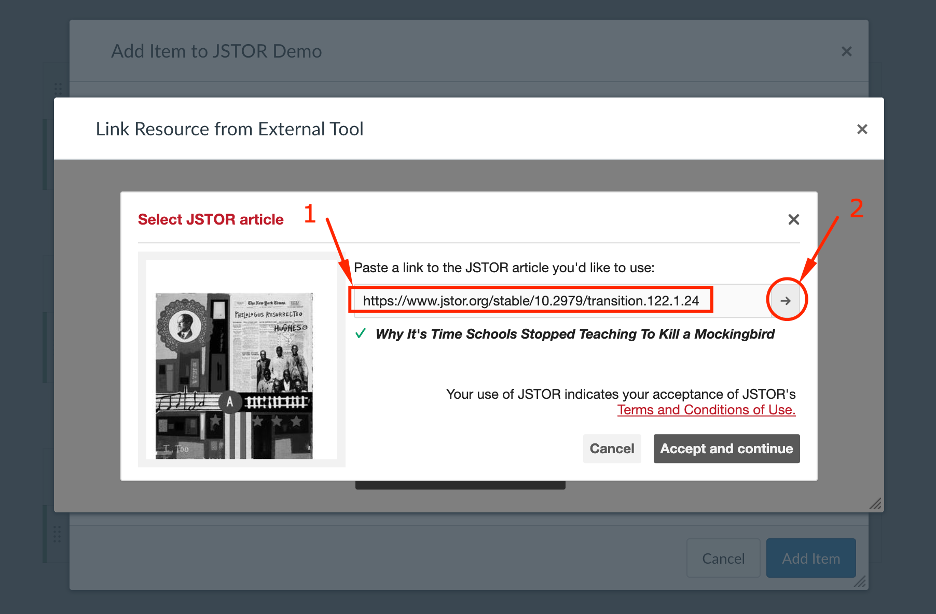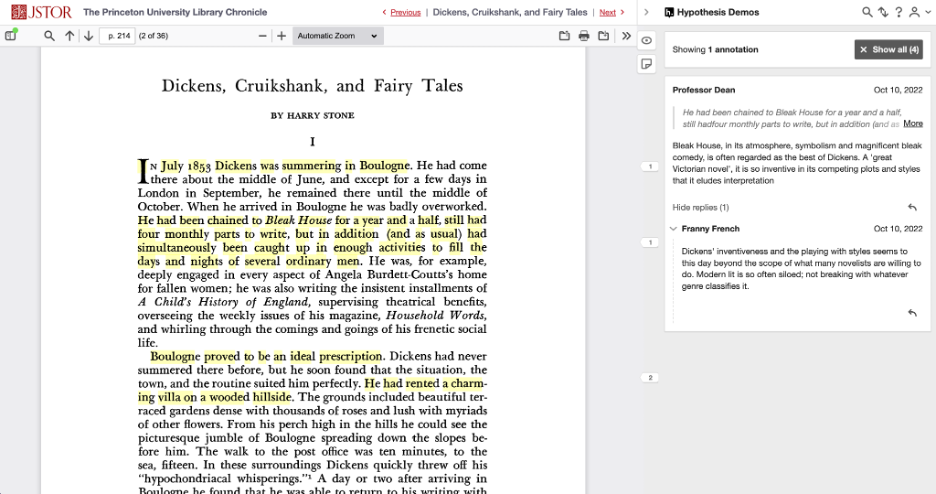Students need to learn how to read scholarly articles:
Here’s how technology can help

Eglon van der Neer (Dutch, Amsterdam 1635/36–1703 Düsseldorf). Detail of The Reader. n.d. Oil on canvas, 15 x 11 in. (38.1 x 27.9 cm). The Metropolitan Museum of Art.
Originally published July 2023. Reposted from the Scholarly Kitchen with author permission.
Students who learn how to read and engage with scholarly articles as part of their research and writing process develop effective skills that serve them well in college and beyond. We see recognition of this with growing emphasis on undergraduate research and the introduction of science research programs in secondary education.
But let’s admit it: reading a scholarly article isn’t easy. A colleague recently shared that her 15 year old daughter is spending hours wading through dense research articles on her own. She is learning, but is often frustrated and longing for someone to help her understand new concepts and methodologies.
Can technology help? It can. Technologies like generative AI can be used to summarize articles or explain difficult concepts, doing some of the heavy lifting for students. If the outputs are accurate, that may be helpful, but in most cases a summary is not a replacement for close reading and deep engagement. Might there be technology that helps the student learn to read challenging scholarly materials? The most promising technology we have seen and are experimenting with is social annotation.
The concept of annotation is as old as scholarship itself. People have been scribbling in the margins and reviewing those notations for centuries. Social annotation brings this activity into a shared digital space. It empowers students and their teachers to read and discuss scholarly articles together through their collective annotations.
Why should scholarly publishers and librarians care? The scholarship we cultivate, edit, publish, collect, and preserve should be accessible to student learners. Many scholarly publishers and librarians think about integrating this content into research workflows, but have not yet seriously considered instructional workflows beyond course reserves.
This post explores a new collaboration between JSTOR and the social annotation tool Hypothesis that is showing positive results. By implementing a technology integration among JSTOR, Hypothesis, and learning management systems (LMS) and piloting it at several institutions, we’re seeing more instructional uses of content and greater engagement among students with the material. This is a model that we hope other academic resource providers will consider to make scholarship more accessible to students and deepen their learning process.
Getting acquainted: what’s a Learning Management System?
For students and instructors, the Learning Management System (LMS) is the hub for their everyday work — that’s where rosters are added by the registrar and where grades are input by instructors. Students submit assignments through the LMS. LMSs serve as the access point for primary content for courses as well, sometimes through permalinks to library resources like JSTOR that provide access to publisher content, but also through re-hosting that content, as when instructors upload downloaded PDFs to their course shells.
Additionally, LMSs serve as the way that students and instructors access many third party teaching and learning tools that are used in courses. IMS Global Learning Consortium developed the Learning Tools Interoperability (LTI) standard in order to facilitate the integration between LMSs and tool providers. For example, tools that colleges and universities adopt to increase student engagement, like the social annotation tool Hypothesis, are accessed through the LMS. Once a tool is implemented into a school’s LMS and selected by the teacher, it can make adoption by students easier, since the LMS provisions not only authorization but also user accounts, which can be complicated in a classroom setting to manage.
Social annotation and barriers to using academic articles in the classroom
Social annotation has been around for a while. Hypothesis was launched in 2011 and lets individuals and groups of people annotate a wide array of digital content, including academic articles and books. Hypothesis faces three major challenges that make article annotation for instruction difficult:
- Platforms that host scholarly content like JSTOR and LMSs and tools used by students and instructors are often not directly connected, creating friction for student access.
- Often professors overcome challenge #1 by uploading PDFs into the LMS. Putting aside potential copyright restrictions or terms of use, this doesn’t allow for the tracking of usage and attribution of impact that is important to publishers, and librarians alike. Even when scholarly articles are open access, authors, publishers, and librarians want to know how and where they are being used to measure their impact and support data-driven decisions. It’s also more clicks for instructors moving content between platforms.
- As noted above, scholarly prose and research is difficult to read! Students can benefit from more deliberate scaffolding around such content in order to improve comprehension and increase engagement.
The pilot: technology integration and enhanced learning
We decided to model the potential for an interoperable note-taking and discussion layer on top of publisher content within the everyday learning environments used by students and instructors, solving for the three main problems associated with instructional use of academic articles.
We have provided pilot access to a few dozen US institutions for the duration of the 2022-2023 academic year. The result is that instructors can provide their students with compliant and easy-to-access pathways to articles and books in JSTOR as part of assignments within the LMS. Moreover, as part of a graded, engaging activity, this content is not only being accessed more readily, but also more deeply.
HERE’S HOW:
Hypothesis allows instructors to select documents from cloud storage and the web through the assignment creation process in their LMS integration. Working with JSTOR, they have now added the ability to use a stable URL for an article or book from the JSTOR library in the same workflow.
Using this pathway to engage with JSTOR content through Hypothesis, instructors and students are authenticated through their institutional affiliation recognized via the LMS. This ensures that their anonymous but unique usage of the content is registered – rather than the PDF being downloaded from JSTOR and uploaded elsewhere – for example, in the LMS’s native cloud storage system. At the same time, student names and the content of their annotations are kept private.


RESULTS:
Early indications are that students and teachers accessing content in this way are not only accessing it directly, but they are engaging with it in more deep and sustained ways. Some instructors assess annotations as part of their courses. When students are graded on annotating, they are more likely to read and return to the reading multiple times. When their notes are on these texts, they also revisit the reading as part of other summative assignments like when preparing for a paper or studying for a test. Each new visit logs usage for publishers and authors that would have been lost without this integration. One case study at UC Santa Cruz showed the assignment of a single article to a class of thirty students led to over 400 content accesses.
What’s next?
Encouraged by these results, we plan to expand the JSTOR and Hypothesis pilot ahead of the coming academic year. ITHAKA and JSTOR are excited enough by the promise of this collaboration, and for the impact on learning of social annotation more broadly, that ITHAKA has made an investment in Anno.co, the public-benefit corporation behind Hypothesis.
Beyond JSTOR, other publishers and repositories can take advantage of this model for delivery of content that enhances user experience and increases use of and deepens engagement with their material. As a starting point, interested parties can join Social Learning Across Content (SLAC), a coalition of content platforms and publishers working towards a vision where social learning can take place anywhere in the same way regardless of technology or vendor.
The impact potential
Students read articles and books from across a wide range of content sources as part of their studies. They are source agnostic, moving freely between platforms following research interests and lines of inquiry. When learning tools are shared across platforms, users bear less cognitive load having to adapt to each platform’s unique user experience. What’s more, their artifacts from learning tools, like notes from digital annotation with Hypothesis, rather than being locked into a particular content platform, will follow them wherever their reading takes them, making their own content more accessible and reusable.
More urgently, recent advancements in generative AI have made it more imperative for the nexus between engagement, interaction and content to be centered around the content itself. ChatGPT is accomplished at summarizing material its large language model has access to but is far from adept at citation. There is a danger that readers may think it unnecessary to visit content at its source. As such, readers may be distanced from the published works that are the source of the ideas with which they are engaging. Increasing interactivity at the site of origin for the content will increase the value of traveling to that content rather than taking shortcuts. To support this shift, teachers can emphasize the processes of reading, thinking, and writing in their courses rather than the final output.
As a community faced with the need to thrive as individual organizations and also as a system, we should be creating interoperable pathways to access and interact with scholarship so that students can engage in sense-making directly with content. Social annotation, and its model of the integration of Hypothesis with JSTOR, provide a scalable opportunity for that direct and deep engagement.
Institutions that participate in both services can already leverage the full spectrum of social annotation through our seamless integration of the JSTOR and Hypothesis platforms. Or, contact the Hypothes.is support team for assistance in activating Hypothesis on your JSTOR account.